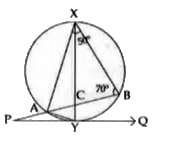Write the common difference of the arithmetic progression whose nth term is
a] n2+5
b] 2n2−6 Solution in Kannada
The correct Answer is:a] an=n25
a1=12+5=1+5=6
a2=22+5=4+5=9
d=a2−a1=9−6=3
b] a=2n2−6
a1=2(1)2−6=2=−4
a2=2(2)2−6=8−6=2.
d=a2−a1=2−(−4)=6
Step by step video, text & image solution for Write the common difference of the arithmetic progression whose nth term is a] n^(2) + 5 b] 2n^(2) -6 by Maths experts to help you in doubts & scoring excellent marks in Class 10 exams.
Updated on:21/07/2023Topper's Solved these Questions
- ARITHMETIC PROGRESSIONSBOOK - ZEN PUBLICATIONCHAPTER - ARITHMETIC PROGRESSIONSEXERCISE - ZEN ADDITIONAL QUESTIONS (SHORT-ANSWER [SA] TYPE 1 - QUESTIONS)
24 Videos
- ARITHMETIC PROGRESSIONSBOOK - ZEN PUBLICATIONCHAPTER - ARITHMETIC PROGRESSIONSEXERCISE - ZEN ADDITIONAL QUESTIONS (SHORT-ANSWER [SA] TYPE 2 - QUESTIONS)
14 Videos
- ARITHMETIC PROGRESSIONSBOOK - ZEN PUBLICATIONCHAPTER - ARITHMETIC PROGRESSIONSEXERCISE - ZEN ADDITIONAL QUESTIONS (MULTIPLE-CHOICE QUESTIONS [MCQS] )
17 Videos
- AREA RELATED TO CIRCLES BOOK - ZEN PUBLICATIONCHAPTER - AREA RELATED TO CIRCLES EXERCISE - ADDITIONAL QUESTIONS (HIGHER ORDER THINKING SKILLS)
7 Videos
- CIRCLESBOOK - ZEN PUBLICATIONCHAPTER - CIRCLESEXERCISE - ZEN ADDITIONAL QUESTIONS ( HOT [HIGHER ORDER THINKING SKILLS] - QUESTIONS) (IIT AND IMO)
9 Videos
Similar Questions
Write the nth term of the AP:
a] 13,8,3,−2,…..
b] √2,3√2,5√2,…..
c] 121,117,113,…..
d] 34,54,74,….
e] −15,−10,−5,0,….....
View SolutionFind the 12th term from the end of AP 8, 10, 12, ..... , 130
View SolutionThe first nth term of a AP is given by
View SolutionFind the area of the shaded region portion in the given figure if E is the midpoint of AB,AGE and BEF are quadrants, and DOC is a semicircle.

View SolutionIn the adjoining figure, XY is a diameter of the circle and PQ is a tangent to the circle at Y. Given that ⌊AXB=50∘ and ⌊ABX=70∘, calculate ⌊BAY and ⌊APY.

View SolutionThe common difference of an arithmetic progression in which a_(15)-a_(6)=-(27)/(2) is (where a_(n), is the nth term of the given AP)
View SolutionThe sum of 'n' terms of a progression is (n2+5n). Prove that it is arithmetic progression. Also find its common difference.
View Solution(a) The nth term of a progression is (3n+5). Prove that this progression is an arithmetic progression. Also find its 6th term. (b) The nth term of a progression is (3−4n). Prove that this progression is an arithmetic progression. Also find its common difference. (c) The nth term of a progression is (n2−n+1). Prove that it is not an A.P.
View SolutionThe ratio of the sum of n terms of two arithmetic progressions is given by (2n+3):(5n−7). Find the ratio of their nth terms.
View SolutionIf the nth term of an arithmetic progression is 2n−1, then what is the sum upto n terms?
View SolutionFind the first term and common difference of the Arithmetic Progressions whose nth terms are given below
tn=−3+2n
View SolutionFind the first term and common difference of the Arithmetic Progressions whose nth terms are given below
tn=4−7n
View SolutionThe sum of the first n terms of an arithmetic series whose nth term is n can be calculate by the formula n(n+)/2. Which one of the following equals the first eight terms in a series whose nth terms is 2n?
View SolutionThe sum of n terms of an Arithmetic progression is Sn=2n2+6n. Find the first term and the common difference.
View SolutionIf the arithmetic progression whose common difference is nonzero the sum of first 3n terms is equal to the sum of next n terms. Then, find the ratio of the sum of the 2n terms to the sum of next 2n terms.
View Solution
